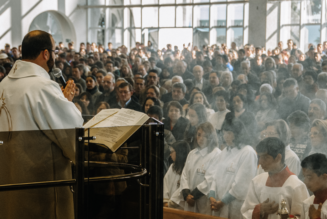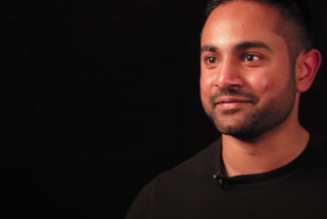
Just like how Navy planes have vast instrumented ranges for aerial wargames, submarines have one too, and it is arguably even more impressive.

The Bahamas are home to white beaches, sun-scorched tourists, towering cruise ships, and the United States Navy’s most advanced weapons and sensor testing range. Beneath the revealing party goers dancing on the lido deck, submarines sail quietly through the Northeast Providence Channel into a secure area called the Atlantic Undersea Test and Evaluation Center, or AUTEC.
Just like how Navy aircraft fight mock aerial wars over instrumented ranges where each player’s every move is tracked, those that deal in the shadowy art of submarine and anti-submarine warfare have a similar place in AUTEC. Here the Navy develops submarine-related tactics and weapons, validates the signatures of their own boats, and of course, fights mock undersea battles, pushing submariners to their limits.
In 1963, the United States entered a joint agreement with the United Kingdom to develop the Ranges of Andros Island in the Bahamas on the condition that the Royal Navy would have access, as well. Shore facilities were under construction for three years, operated and maintained by the RCA Corporation. The Electric Boat Division of General Dynamics built two deep-sea submersibles to install the hydrophone ranges. In 1966, the Andros Ranges were officially renamed the Atlantic Undersea Test and Evaluation Center, or AUTEC for short.

Delivered around 1968, AUTEC I and II submersibles were built by the Electric Boat Division of General Dynamics and were designated Turtle and Sea Cliff by the US Navy.
The Bahamas achieved full independence from the United Kingdom in 1973 and the U.S. State Department negotiated a new agreement to use the range. After 1988, the U.S. Government agreed to lease the land (and water space) annually from the Bahamian Government.

AUTEC’s main operating base on Andros Island.
Located 100 miles southeast of Florida, AUTEC Site 1 is based on Andros Island. The topography just off the east coast of Andros plummets to about 1,000 fathoms—roughly 6,000 feet—in a north to south corridor called “The Tongue of the Ocean.” In this 500 square mile hockey stick-shaped area, the Navy tests some of its most advanced sensors, weapons, and tactics.
The test range is surrounded by shoals and islands limiting the amount of ambient noise. This makes the range very quiet and perfect for testing submarines and associated weaponry.

Two ranges are used for submerged testing: Shallow Water Mine Field near Berry Islands and Deep Water Testing Range (formerly STAFAC) southeast of Andros.
Large fields of sound-sensitive hydrophones monitor the submerged tests. High gain measurement systems (HGMS) are used to ensure sound silencing standards are met after a submarine’s maintenance period because changes to existing equipment and installation of new equipment can significantly change a submarine’s sound signature.

During a signature profile measurement, a submarine slowly drives between a pair of submerged arrays that measure mechanical and flow noise. This is a very slow process as the sub must be configured with different equipment line ups between recordings. The result is an exact sound measurement level of the submarine performing a variety of evolutions. You can read all about this critical technology and its uses in this past War Zone feature.
The deep-water testing range is broken into two zones, North Range and South Range. They can support multiple simultaneous tests and mini-war game events—when you get two or more submarines on the range, there’s going to be a mock battle. Both crews want to test their skill against the other and this tactical interaction is good for morale and qualifications.

Site 1 on Andros Island.

Close-up of Site 1.
These little skirmishes between nuclear fast attack submarines (SSNs) are not only encouraged, they are scheduled. The Undersea Warfighting Development Center is responsible for formulating, improving, and testing submarine tactics. Some of this is done at AUTEC. Two or more submarines would be fitted with Noise Augmentation Units (NAU) and meet down on the range for a ‘mini-war.’
The NAU allowed American submarines to sound like any other submarine, from a Soviet-era Victor III to a Chinese Han nuclear-powered attack submarine. Scenarios involving anti-submarine warfare (ASW) aircraft and NATO submarines would hunt the ’red force’ adversary sub playing the bad guy for days using new tactical approaches. These real-world tests were recorded in a 3D model in the AUTEC command building and analyzed for effectiveness. From these ‘mini-wars,’ NATO submarine tactical doctrine is molded and improved upon.

A helicopter passes over the nuclear-powered attack submarine USS Pittsburgh (SSN-720) shortly after the vessel surfaced off the coast of Andros, The Bahamas during an emergency surface drill.
The Fleet Operational Readiness Accuracy Check Site (FORACS) coordinates all tests on these versatile ranges. They are responsible for measuring the performance of sensors and navigation equipment installed on surface ships, submarines, and aircraft. With radar sites around the island and multiple fields of seafloor-moored hydrophones, the Range Safety Officer can watch every vessel and aircraft on the range in real-time. He is in constant voice communication with all aircraft, range craft, ships, and submarines via radio and underwater communication systems.
Submarines from eight NATO countries come to verify their performance in a real-world environment, too. It is common for a United States Navy sub to be paired with a Royal Navy sub for equipment tests and sound measurements. If there are no delays, there is usually time at the end of the test schedule for the two vessels to go head-to-head in an undersea mock battle. This is when both crews can demonstrate their tactical prowess against an equal foe.

Some of the support assets that make AUTEC a highly unique training destination and weapons and tactics development proving ground.
During a mock battle, the surface range craft leave the area and the submarines are allowed to enter the same water space, but are limited to different depth zones to prevent a collision. Battlestations are maintained for hours as two submarines slowly maneuver around each other in their quietest posture.
When two of the world’s quietest submarines spar, it results in very close encounters. Sonar teams listen and scan for any noise that might give their opponent away. When detection is recognized, the sonar operator designates it “sierra one” (designation for an assigned sonar contact). The sonar supervisor calls out bearing, estimated course, and range based on only a few seconds of data. The approach officer, usually the commanding officer, initiates “firing point procedures sierra one, tube two,” referring to what torpedo tube to shoot).

The conn aboard the USS Seawolf (SSN-21).
The weapons officer designates sierra one as the system contact and enters a target solution into the console. This data is sent to the exercise weapon in torpedo tube two. The weapon is powered on, torpedo gyros rapidly spin up, an internal system check is run, and the fire control solution data is set in memory. “Solution set!” is confirmed at fire control.
The flooded torpedo tube is equalized to current depth pressure and the outer door is opened. “Weapon ready!” is announced by the weapons officer. The diving officer declares “Ship ready!” The captain authorizes launch with a short command, “Shoot tube two.” Torpedo launch is confirmed with the rumble of thousands of pounds of air forcing several hundred gallons of seawater into and through the torpedo tube. “Weapon startup” is confirmed from sonar when a new trace appears at the top of the display. “Wire clearance maneuver complete, weapon running normally.” Is verified by the sonar team.
This entire frequently drilled performance is done in under 45 seconds.
Because the target submarine is expected to counter fire. The command wire is cut leaving the torpedo to execute its orders within preset parameters and torpedo evasion begins. Countermeasures are launched and the submarine races away from contact. The target submarine will not have time to evade a well-placed shot at this short range.
Exercise torpedoes will not actually hit a target as this can be extremely dangerous and would destroy the weapon. After a successful hit is confirmed by the weapon’s logic circuit, it will shut itself down and float to the surface. To become a warshot, a training torpedo must have multiple successful attacks at AUTEC.

Mk46 exercise torpedo being recovered.
After each encounter, the torpedo retriever range craft drives in and picks up the floating exercise torpedo. This can take an hour or more and gives each crew a chance to debrief the attack and evasion in the control room. A more thorough reconstruction is done later with AUTEC’s range information showing exactly what happened during the event. This post maneuver evaluation is used to identify key moments of the engagement and results in better tactical performance in the future.
AUTEC’s secure location makes it ideal for weapons testing. The Mk 46, Mk 48 ADCAP, and Mk 50 torpedoes are tested here. Intermediate maintenance facilities for torpedoes and the Mk 30 target are located on Andros Island. Anti-Torpedo technology that is currently in development and supported by Site 1.

A Sikorsky S-61N helicopter, attached to Atlantic Undersea Test and Evaluation Center, recovers a Mk 54 recoverable exercise torpedo during a submarine command course in the Atlantic Ocean, Nov. 10, 2018. Abraham Lincoln Carrier Strike Group (CSG) cruiser-destroyer (CRUDES) units are completing a Surface Warfare Advanced Tactical Training exercise (SWATT). SWATT is led by the Naval Surface and Mine Warfighting Development Center and is designed to increase warfighting proficiency, lethality and interoperability of participating units.
The range’s highly accurate positioning data can identify if a weapon is not performing as expected. The main site also has research, development, test and evaluation facilities called Range User Buildings that can support military contractor projects. This provides the contractor teams the ability to rapidly correct and modify devices during their onsite test time.
A more recent addition to the north end of the range is a shallow water minefield near Berry Island. With a growing demand for littoral operations, submarine crews are spending more time near minefields, deploying special forces, and operating in shallow water. The shallow water minefield was key in developing the Navy’s submarine mine detection equipment and crew proficiency. The AN/BQS-15 and AN/BSY-1 sonar systems performed at a 60%-90% mine detection rate. Improved training and equipment upgrades in the ARCI phase IV sonar system resulted in greater than 90% mine detection.

Military contractors like SeaTrepid provide Remote Operated Vehicles that are used to practice Mine Countermeasures (MCM). These tethered vehicles swim out over 100 meters from the SSN and detect mines. ROVs and Unmanned Underwater Vehicles (UUV) significantly extend the sensor capabilities of today’s submarines, in general.
AUTEC is also home to an advanced Electronic Warfare Threat Simulator. This system provides a real-time, dynamic and complex electromagnetic environment for the range. 21st-century battlespace is more complex than ever before. Jamming and spoofing targets are part of the fight. This capability adds another layer of realism to performance testing.

A Tomahawk Land Attack Missile (TLAM) is launched from the USS Florida (SSBN-728), during Giant Shadow, a Naval Sea Systems Command (NAVSEA)/Naval Submarine Forces Experiment, conducted off the coast of the Bahamas.
All the test planning and coordination are done by the AUTEC offices in West Palm Beach, Florida. This is where teams prepare their test plan, assemble their personnel and take a short flight to the island. Access to the island is limited to a daily flight from West Palm Beach airport or a charter flight.
Site 1 is more than just a proving ground, it is an operational naval base. Andros island supports drug enforcement Operation Bahamas, Turks and Caicos (OPBAT) with the U.S. Coast Guard. AUTEC was the primary logistic location after Hurricane Dorian decimated the Bahamas in September 2019. Andros airport and Site 1’s 12 helicopter pads were a key part of life-saving operations.

USS Alexandria SSN-757 operating off of Andros Island.
AUTEC is the U.S. Navy’s premier submarine warfare proving ground. Crews who train here experience the most realistic warfighting training possible in a peacetime environment. The lessons learned at AUTEC change how America’s submarine and anti-submarine forces fight, ensuring that they can win any battle now or in the foreseeable future.
Aaron Amick is a retired U.S. Navy submarine sonarman. He served in both Atlantic and Pacific Oceans on 688 Los Angles Class Fast Attack and Ohio class ballistic missile submarines. He has published two audiobooks on Cold War-era submarines, Akula SSN Project 971 Sub Brief and USS Nautilus SSN-571 Sub Brief. Now, Aaron manages a small Patreon page and contributes to The War Zone.
Contact the editor: Tyler@thedrive.com









![The 50 best Western movies ever made [They got No. 1 right, but No. 25 deserves a higher rank]…](https://salvationprosperity.net/wp-content/uploads/2021/01/the-50-best-western-movies-ever-made-they-got-no-1-right-but-no-25-deserves-a-higher-rank-327x219.jpg)